Like A Virgin
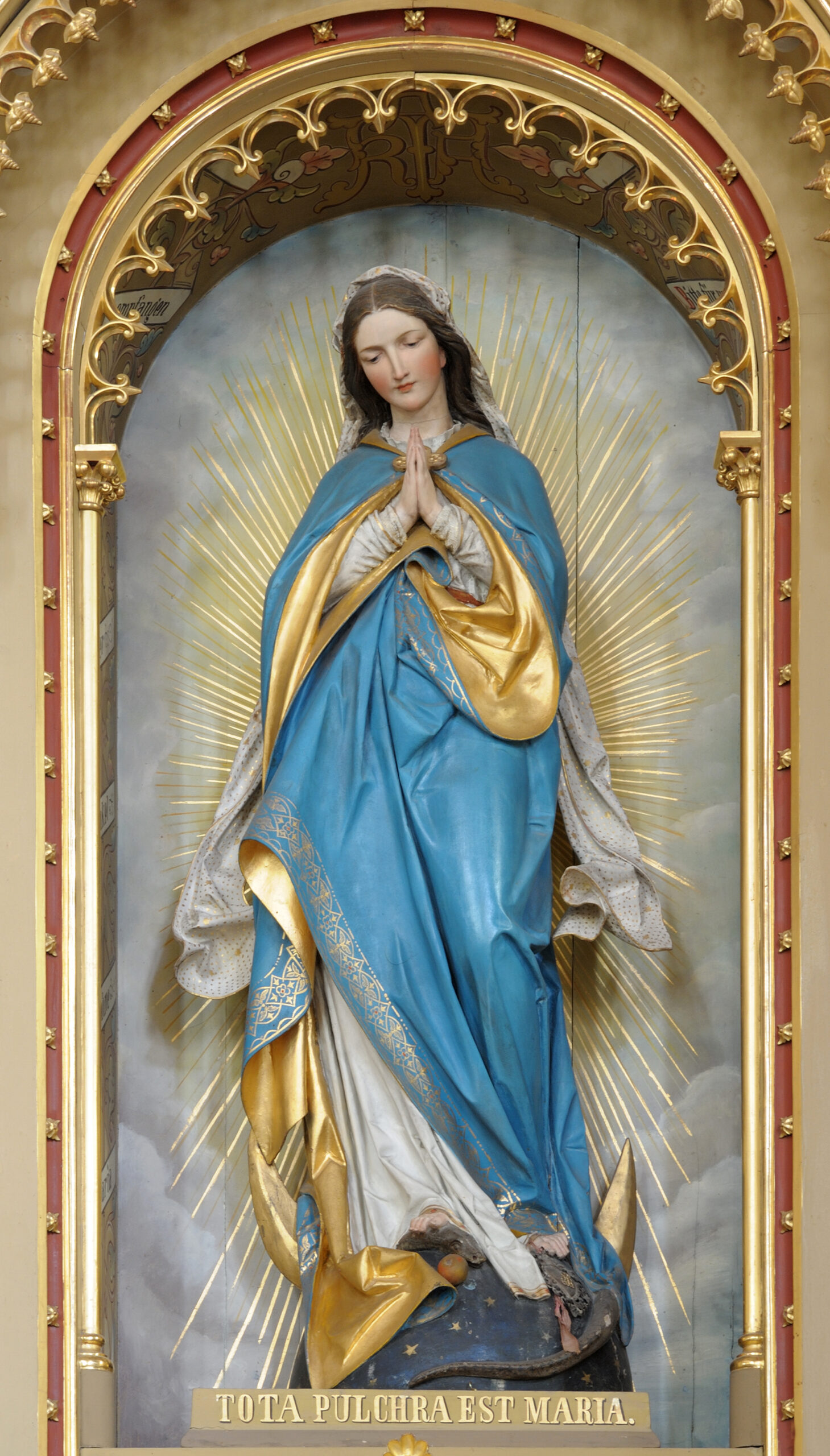
Summary
This OER teaches users how to identify the Virgin Mary and the common themes used to portray her in Art History.
Like A Virgin: Identifying the Madonna
Emily Geary
Introduction:
The Virgin Mary (also known as the Madonna / Mother of God / Holy Mary / Queen of Heaven / Mother Incarnate) is a religious figure most venerated in Christianity, with the various branches (Roman Catholicism, Eastern Orthodoxy, Protestantism, Islam, Anglicanism, and Lutheranism) each worshipping her in different ways. In Catholicism the Madonna is believed to be the mother of Jesus Christ, who she conceived of through an immaculate conception. Her religious status has proved the Virgin Mary to be quite a prominent figure in the art world. She features in artworks from as early as the Byzantine era (c. 330-1453), right to the present day. She is both a folk figure adored by communities worldwide, spanning from Europe to Asia to South America. This is evident in the creation of local art and grottos (public shrines generally embedded into rock faces), coupled with her prominent portrayal in high art.
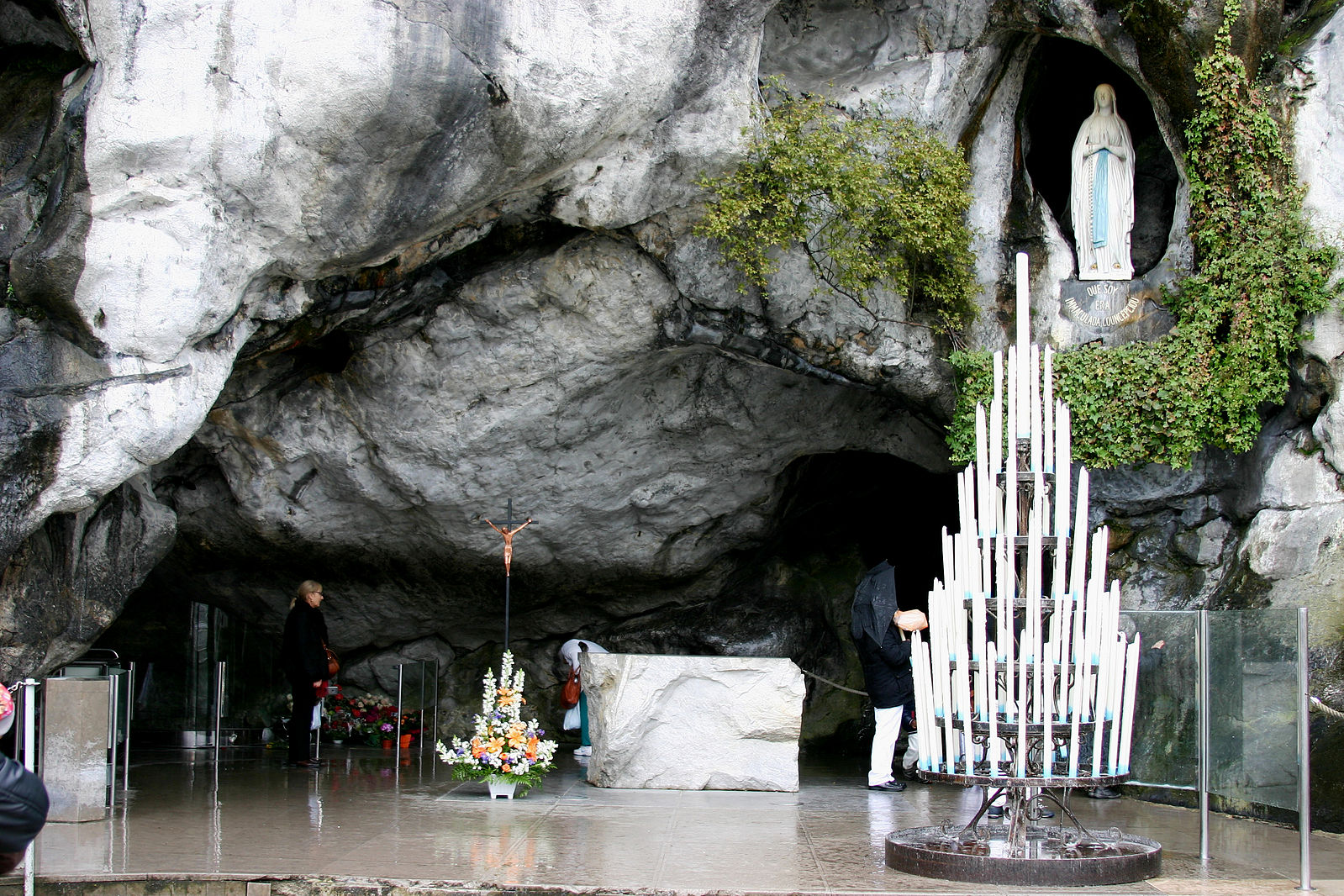
Grotto of Lourdes, Lourdes, 2014. Source. Licensed under CC BY-SA 4.0. No changes were made.
This toolkit is a guide to identifying and interpreting iconography related to the Virgin Mary. To simplify the process it focuses on depictions of the Virgin Mary from 1300-1800, as this period marks the establishment and repetition of many key Virgin Mary tropes in art. There are several common themes in which the Virgin is portrayed, with this toolkit outlining the identifying features of each one. The skills learned from this toolkit can be transferred across multiple periods of art. Once you have worked through the themes, then take the quiz at the end to test your knowledge. Feel free to take notes while studying the themes. An index is available for any terms you may be unfamiliar with.
Step 1:
First, how to identify the Virgin Mary. The typical iconography associated with her are as follows:
- A veil, typically blue, with a shroud (cloak) that is generally red placed over it.
- Three stars, which represent her intact virginity before, during and after pregnancy.
- A halo over her head.
- The Christ Child – more often than not she is depicted with her son Jesus who also has a halo.
Step 2:
Read through the common themes / iconography related to the Virgin. These include (but are not limited to):
——————————————————————————————————————————————————————————————————————————————————————————————–
Madonna Enthroned / Ognissanti Madonna / Queen of Heaven
-
- The Virgin is indoors and sits on a throne, sometimes with Christ on her lap.
- She is flanked (surrounded) by other figures such as angels or saints.
- The throne is usually structured to go above her head. This is a metaphor for the Virgin as being ‘The House of God’.

Giotto di Bondone, ‘Ognissanti Madonna’ (c.1310). Source. Licensed under CC BY-SA 4.0. No changes were made.

“Madonna and Child Enthroned”, c. 1335, attributed to the Master of the Madonna di San Giorgio. Source. Licensed under CC BY-SA 4.0. No changes were made.”
——————————————————————————————————————————————————————————————————————————————————————————————–
Virgin and Child
-
- The Virgin can be featured inside or outside.
- Her son Jesus is in her arms. He is usually positioned in close proximity to her face.
- It is an informal pose, showing the human nature and maternal bond between the mother and child.

Francisco de Zurbarán, ‘Madonna and Child with the Infant Saint John the Baptist’ (1658). Source. Licensed under CC BY-SA 4.0. No changes were made.

Sandro Botticelli, ‘Virgin and Child with an Angel’ (ca.1450-1500). Source. Licensed under CC BY-SA 4.0. No changes were made.
———————————————————————————————————————————————————————————–
Madonna Lactans / The Nursing Madonna
-
- The Virgin is seated and is breastfeeding the Christ Child.
- Her breast is exposed.
- Madonna Lactans can also be identified by the child gesturing towards her breast without feeding from it.
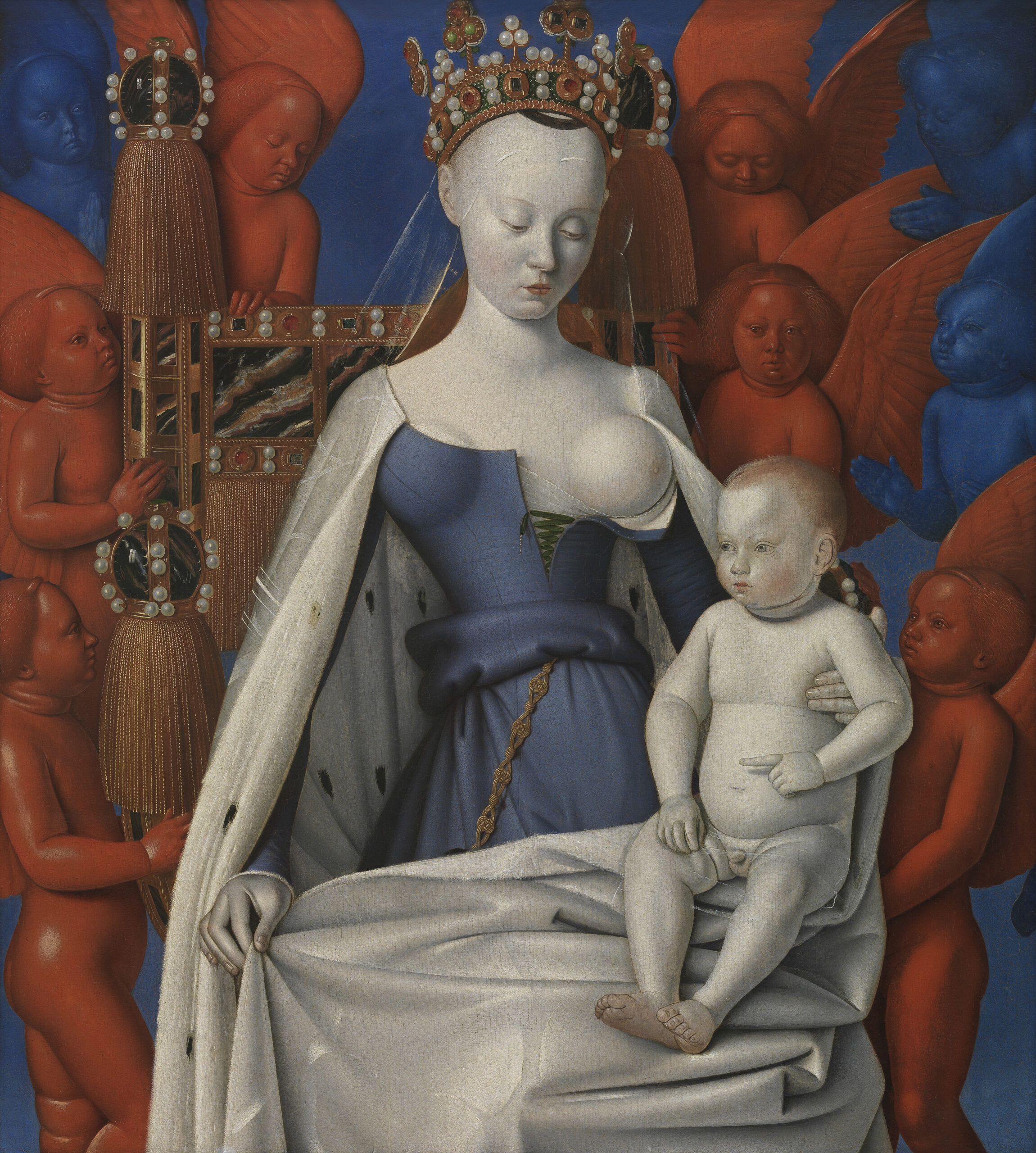
Jean Fouquet, ‘Mary and Child Surrounded by Seraphim and Cherubim’ (1452-1458). Source. Licensed under CC BY-SA 4.0. No changes were made.

Andrea Solario, ‘Madonna Lactans’ (1460-1525). Source. Licensed under CC BY-SA 4.0. No changes were made.
———————————————————————————————————————————————————————————–
The Sorrowful Mother / Mater Dolorosa
-
- The Madonna is visibly older and she wears a white veil / coloured cape on her head.
- The face of the Virgin is sad and her hands are in prayer.
- Her eyes are closed or her gaze is cast downwards. Sometimes she sheds a tear.
- Some paintings depict her with a sword (or multiple) positioned at her heart.
- Sometimes she is seated and holds the dead body of Christ.
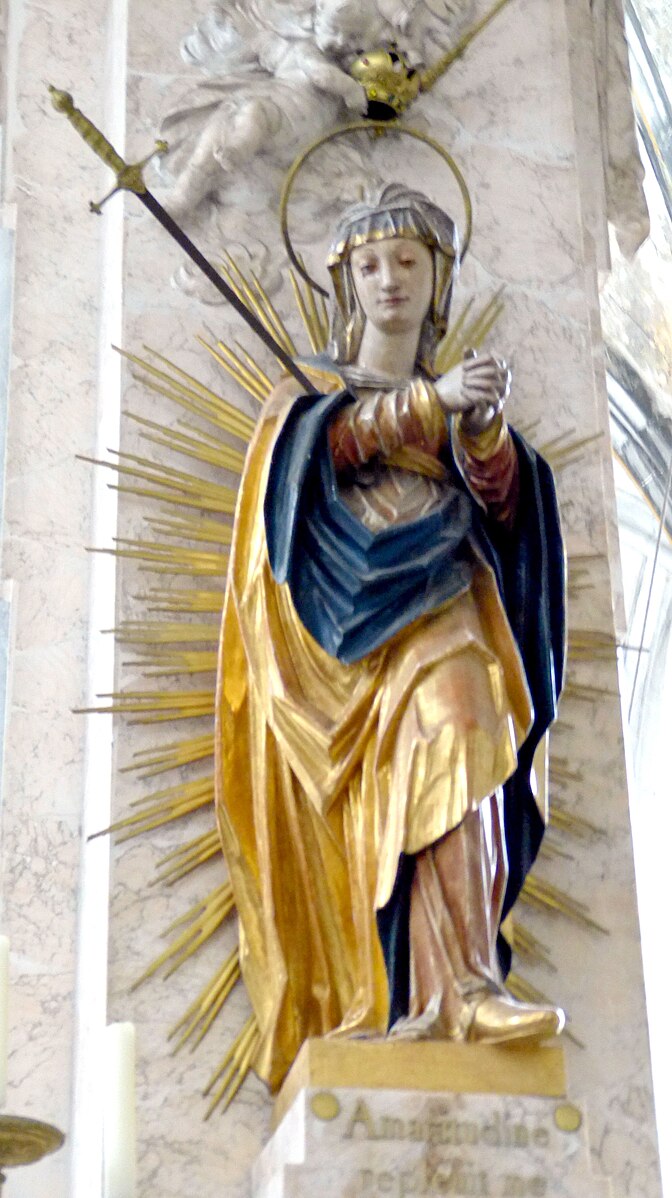
Virgin Moll, ‘Salem ( Baden-Württemberg )’ (1588). Source. Licensed under CC BY-SA 4.0. No changes were made.

Albrecht Dürer, ‘Maria als Schmerzensmutter (Sorrowing Mother)’ (1495-1498). Source. Licensed under CC BY-SA 4.0. No changes were made.

Simon Marmion, ‘The Lamentation of Christ’ (1467). Source. Licensed under CC BY-SA 4.0. No changes were made.
———————————————————————————————————————————————————————————–
Madonna of Mercy / Madonna Della Misericordia
-
- The Virgin is portrayed as a large figure that stands above much smaller figures. The smaller people represent society.
- She holds her arms out and shields the people with her cloak to protect them – often commissioned by churches to show the Madonna protecting society from current issues such as disease or war.

Girolamo di Giovanni di Camerino, ‘Mater della Misericordia’ (c.1500). Source. Licensed under CC BY-SA 4.0. No changes were made.

Jacobello del Fiore, ‘Mater della Misericordia’ (ca.1370-1439). Source. Licensed under CC BY-SA 4.0. No changes were made.
———————————————————————————————————————————————————————————–
The Annunciation / Immaculate Conception
-
- The virgin is visited by the angel Gabriel. He tells her the news that she is pregnant.
- This theme is recognisable through the presence of several elements: the angel Gabriel (who reveals the good news of her pregnancy), a dove (this symbolises the holy spirit), rays of light (this is a metaphor for the immaculate conception).
- There are many variations of this scene – Mary can be inside or outside, seated or standing.

Dante Gabriel Rossetti, ‘Ecce Ancilla Domini! (The Annunciation)’ (ca.1849-50). Source. Licensed under CC BY-SA 4.0. No changes were made.

Fra Angelico, ‘The Annunciation’ (1440–1445). Source. Licensed under CC BY-SA 4.0. No changes were made.
———————————————————————————————————————————————————————————–
Adoration of the Magi
-
- This is a group scene which depicts the Virgin holding the Christ child. A crowd gathers around her.
- It shows the three wise men visiting the child after birth to verify his existence.
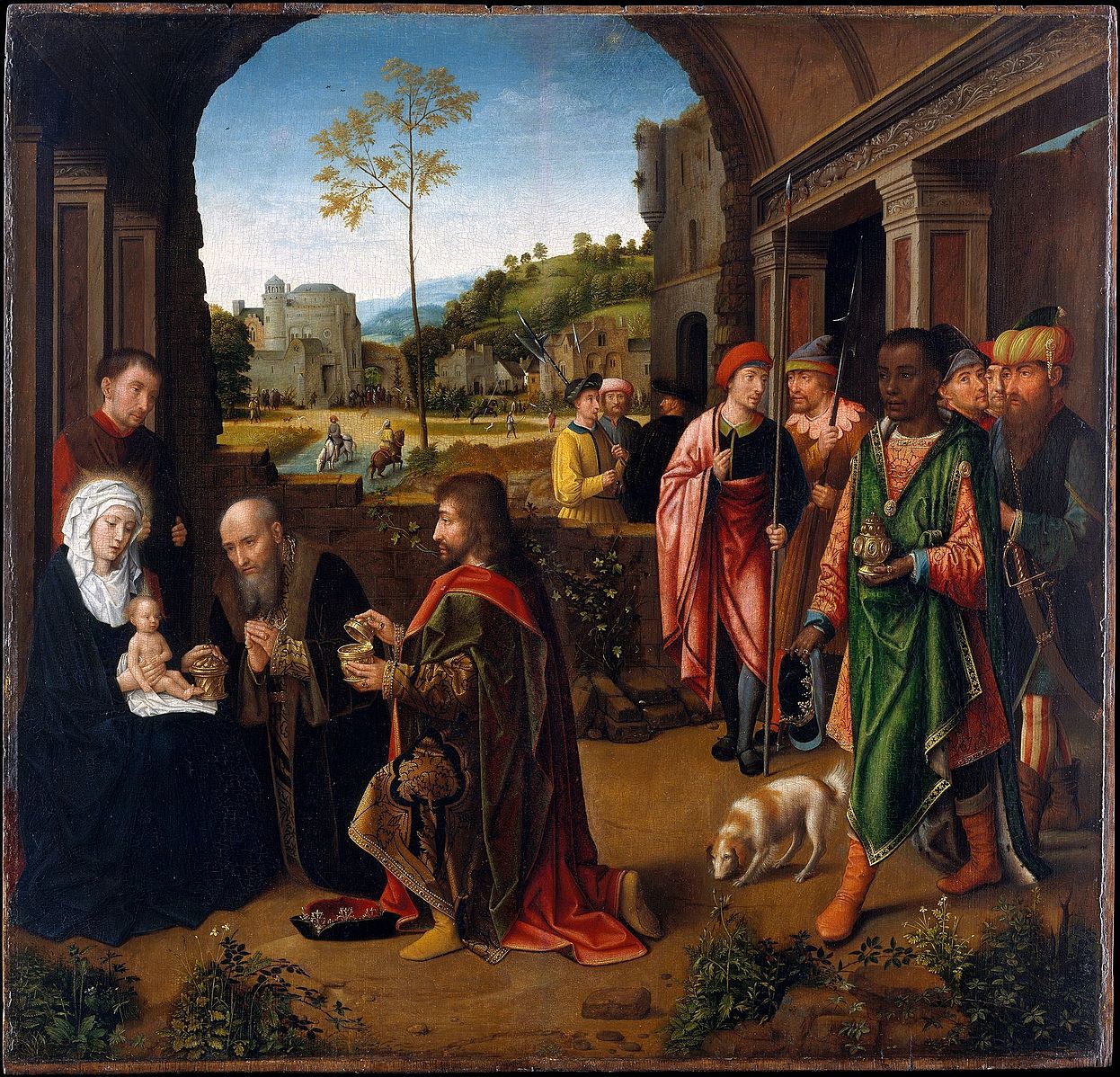
Gerard David, ‘The Adoration of the Magi’ (c.1520). Source. Licensed under CC BY-SA 4.0. No changes were made.

Giotto, ‘Adoration of the Magi’ (c.1305). Source. Licensed under CC BY-SA 4.0. No changes were made.
———————————————————————————————————————————————————————————–
Assumption of the Virgin
-
- Mary is raised to heaven. She is lifted by cherubs towards the sky.
- She is surrounded by a halo of light – this is often depicted in an oval shape that surrounds her.
- She is often dressed in a white or red tunic with a blue cloak draped over her.
- Often there is a crowd below her who watch her as she is lifted into the sky.
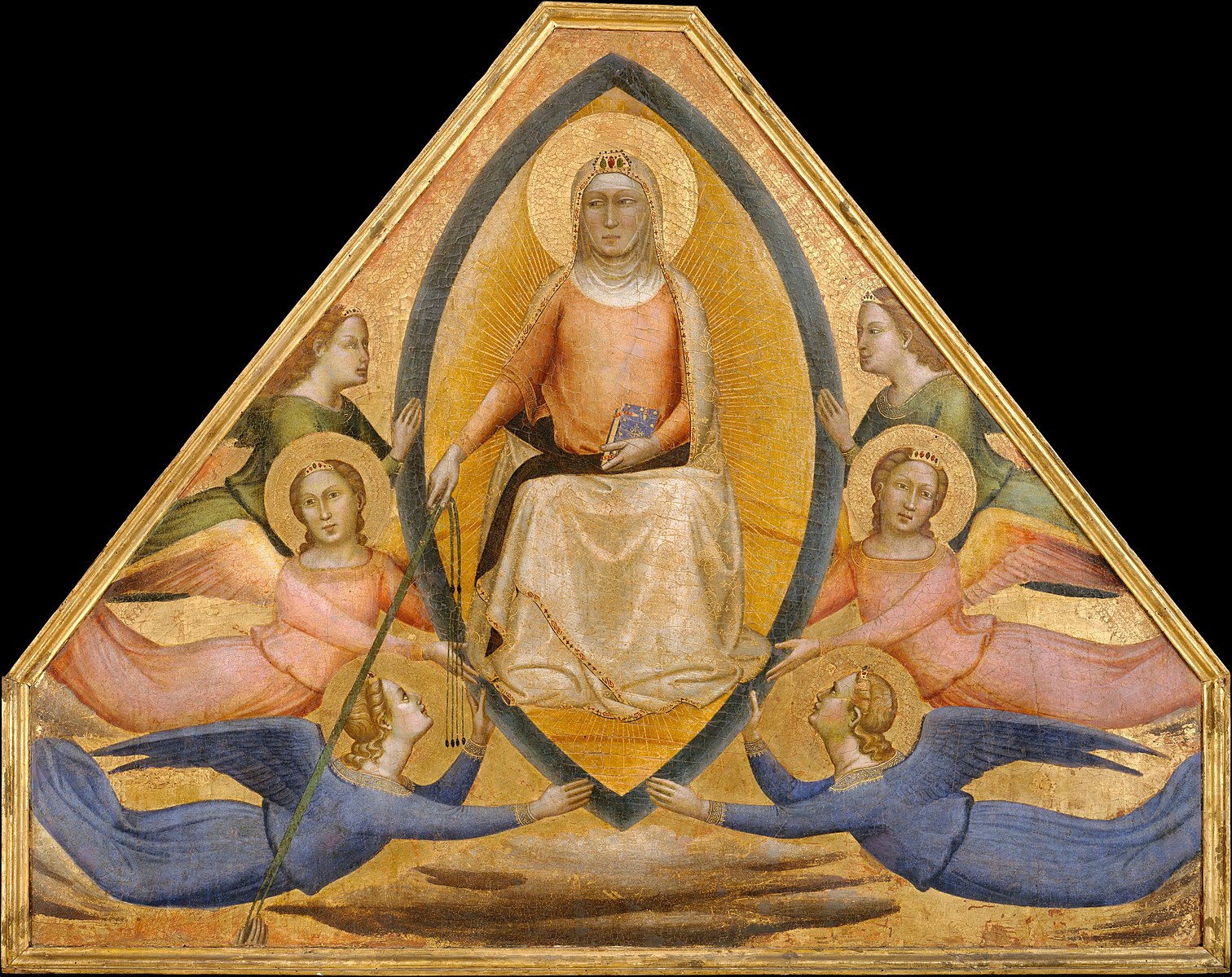
Bernardo Daddi, ‘The Assumption of the Virgin’ (1337-39). Source. Licensed under CC BY-SA 4.0. No changes were made.

Titian, ‘Assumption of the Virgin’ (c.1516-1518). Source. Licensed under CC BY-SA 4.0. No changes were made.
———————————————————————————————————————————————————————————–
Coronation of the Virgin
-
- The Virgin is seated.
- Christ is seated beside her and places a crown on her head. He is crowing her as the Queen of Heaven.
- A crowd watches on from below.
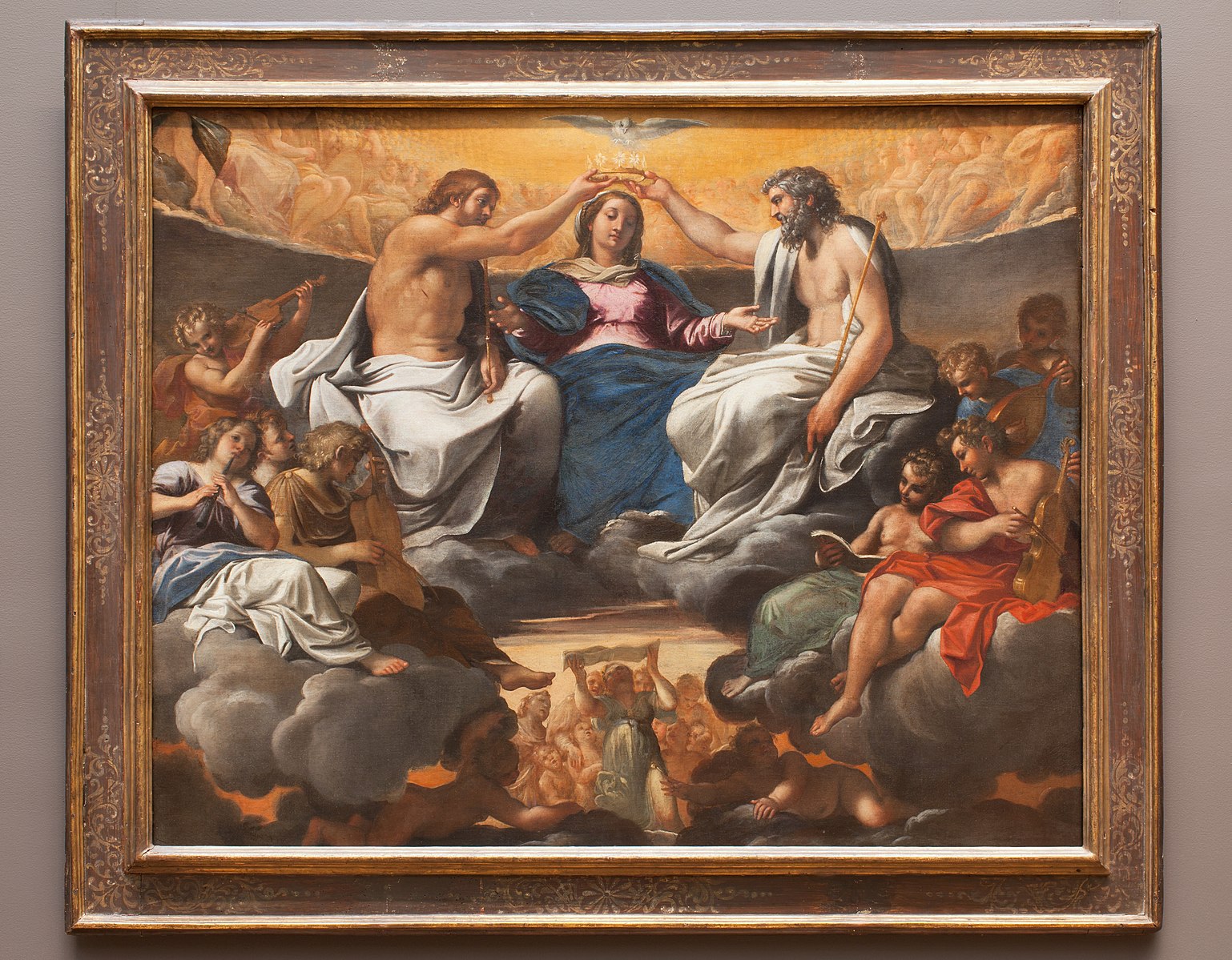
Annibale Carracci, ‘The Coronation of the Virgin’ (c.1595). Source. Licensed under CC BY-SA 4.0. No changes were made.

Giovanni di Paolo, ‘Coronation of the Virgin’ (c.1455). Source. Licensed under CC BY-SA 4.0. No changes were made.
———————————————————————————————————————————————————————————–
Now that you have completed Steps 1 and 2, take the test below to evaluate your learning:
https://view.genially.com/67378f9263521096cbe778fd/interactive-content-like-a-virgin-quiz
———————————————————————————————————————————————————————————–
Key:
Byzantine Era
The continuation of the Roman Empire centred in Constantinople during late antiquity and the Middle Ages (330-1453 AD)
Icon
A devotional painting/artwork of a holy figure.
Immaculate Conception
The belief that Holy Mary became pregnant while remaining a virgin.
Hands in Prayer
The gesture of holding hands together while praying.
Magi
The three wise men who visited Jesus when he was born.
Cherub
A small baby angel – think of cupid.
Like a Virgin 2024 by Emily Geary is licensed under CC BY-SA 4.0



